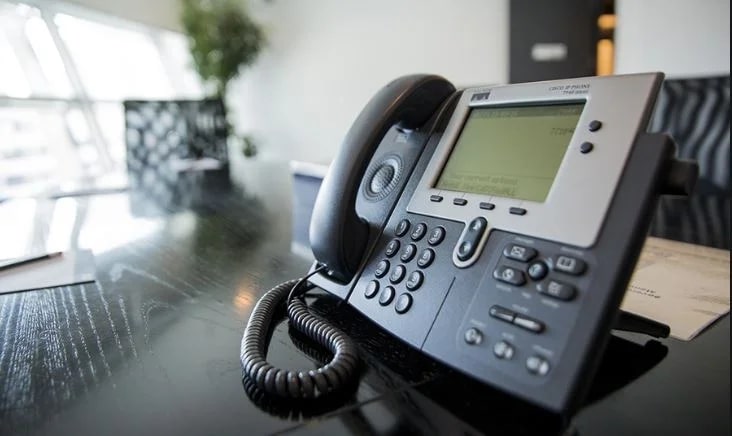In the current digital business environment, effective communication is essential for organisational success. Traditional phone lines, once a staple in business communication, are increasingly replaced by more modern solutions like SIP Trunking.
Here, we will examine the differences between SIP Trunking and traditional phone lines to help you make an informed decision.
What is SIP Trunking?
SIP Trunking, or Session Initiation Protocol Trunking, is a cutting-edge technology that enables businesses to make calls over the internet. Instead of using physical phone lines, SIP Trunking utilises a virtual line, commonly referred to as a ‘trunk.’ This technology is part of a broader movement towards IP-based solutions, offering many benefits like cost savings, scalability, and the potential for advanced features such as video conferencing and VoIP calls.
Traditional Phone Lines
Traditional phone lines, known as the Public Switched Telephone Network (PSTN), have been the cornerstone of business communication for many years. Despite their reliability, traditional phone lines are often rigid, costly, and lack many features that modern businesses require.
Cost-Efficiency: A Closer Look
SIP Trunking
By making calls over the internet, SIP Trunking eliminates the need for expensive hardware and minimises maintenance costs. SIP Trunking is a cost-effective solution for both local and international calls, and often companies can tailor packages to the client’s specific needs, only paying for what they use.
Traditional Phone Lines
With traditional phone lines, there are usually fixed costs for hardware, installation, and maintenance. Additionally, businesses may incur high fees for international calls, making this option less economical in our increasingly globalised world.
Scalability: Planning for the Future
SIP Trunking
As your business expands, so too will your communication needs. SIP Trunking’s inherent flexibility allows for quick scaling, enabling businesses to add or remove lines and features with ease.
Traditional Phone Lines
In contrast, scaling with traditional phone lines often entails a cumbersome and expensive process involving hardware changes and sometimes even service interruptions.
Versatility and Advanced Features
SIP Trunking
One area where SIP Trunking shines is in its range of features. From call recording to video conferencing and even integration with Customer Relationship Management (CRM) systems, the possibilities are nearly endless.
Traditional Phone Lines
Traditional phone systems focus primarily on voice services, without the capability for advanced features like integration with business software or video calls.
Reliability: An Important Factor
SIP Trunking
While SIP Trunking relies on internet connectivity, advancements in broadband technology have made it a highly reliable choice. Moreover, many SIP providers offer failover and redundancy solutions to ensure continuous service.
Traditional Phone Lines
Though known for their reliability, traditional phone lines can still be susceptible to outages due to natural disasters, and their failover solutions are often less robust.
Transitioning: Making the Move
Switching your business’ communication system is a significant decision. However, the flexibility, cost-effectiveness, and advanced features of SIP Trunking make it an increasingly popular choice among modern businesses. Conversely, traditional phone lines, though reliable, are becoming somewhat obsolete given their limitations in cost, scalability, and features.
Migration: What to Expect
SIP Trunking
The migration process for SIP Trunking is typically smooth. Most vendors offer robust customer support to guide businesses through the transition. As SIP Trunking is compatible with various IP-enabled devices, many businesses can continue to use their existing hardware, making the shift easier and less costly.
Traditional Phone Lines
Transitioning away from traditional phone lines often means phasing out old hardware, which could lead to operational disruptions. However, some businesses find comfort in the familiarity of their existing setup and may resist migrating to newer technologies.
Security Concerns
SIP Trunking
Security in SIP Trunking has dramatically improved over the years. Most reputable providers offer encrypted connections and robust security protocols to protect against unauthorised access and data breaches.
Traditional Phone Lines
While traditional phone lines are not immune to tapping or other unauthorised access, their vulnerabilities are generally well-understood and manageable. Businesses that prioritise security often have to weigh these concerns when deciding between the two technologies.
Making the Appropriate Decision
Choosing between SIP Trunking and traditional phone lines is not a one-size-fits-all decision. It involves a careful analysis of your business’s current needs, future growth plans, and readiness to adopt new technologies. While SIP Trunking offers compelling advantages in terms of cost, scalability, and features, traditional phone lines still have a place in scenarios that require proven reliability and where advanced features are not a priority.
SIP Trunking offers an innovative and future-proof alternative to traditional phone lines. As the trend leans towards digital transformation, making the switch to SIP Trunking could offer your business the competitive edge it needs to thrive in today’s market.
